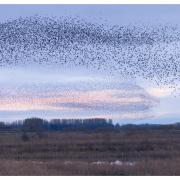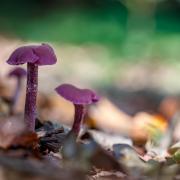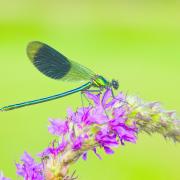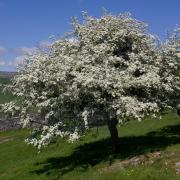Why did the hedgehog cross the road? To see his ‘flat mate’, of course. The joke may be one of the oldest in the book, but the scene which inspired it is no longer as common as you might think; and not because these charismatic creatures have worked out how to use a pedestrian crossing.

Delightfully cute and alarmingly spiky all at the same time, hedgehogs have found their way into our hearts through numerous children’s books and regular appearances on our screens as inpatients to the nation’s animal rescue hospitals. The advent of affordable backyard infra-red cameras means many of us are enjoying their after dark antics as realistically as an episode of Springwatch too. Whatever the reasons for hedgehogs endearing themselves to us all, we now have an ever bigger role to play in the survival the nation’s ‘favourite wild animal’ – and not just a careful swerve when driving at night.
The sad truth is, we’ve lost more than nine out of ten of the nation’s hedgehogs since the 1950s, with a third of their once millions-strong population vanishing in the last decade alone. From an estimated 30 million historically, there may now be just a million hogs left in our hedges.
So what do we know about these enigmatic garden neighbours? Firstly, those spikes. There are around 7,000 specially adapted hairs on a hedgehog’s back, creating a defensive coat that few are prepared to tackle – try lifting a wandering hedgehog out of trouble on a road without the benefit of gloves, and you’ll soon understand why. A strong set of muscles beneath the skin are what allows the hedgehog to rapidly retreat into a protective ball – keeping their softer belly and face well out of harm’s way.
Hedgehogs are almost entirely nocturnal so they can be difficult to see, but are often be heard as they rustle in the undergrowth, and in particular can become quite loud during seasonal romantic liaisons. They can cover up to two miles every night foraging for food, so each hog may visit several gardens.

Hedgehogs are good climbers too and can scramble up and over low walls with relative ease. They have poor eyesight but an excellent sense of smell, and very good hearing – picking up on the smallest of vibrations. As well as being great fun to watch, the hedgehog is also the gardener’s friend – with caterpillars and slugs regularly on the dinner menu.
Hibernating through the winter is key for hedgehogs, helping them to survive when there is very little food available. During the autumn they eat as much as they can, accumulating a reserve of body fat to see them through the tough sub-zero months.
Once in hibernation, a hedgehog can lose a third of its 2kg body-weight and their core temperature drops to as low as four degrees centigrade. Despite this, hedgehogs can wake up several times during the winter, and may even move to a new nest – making your garden even more important.

No longer hogging the limelight
For an animal once ubiquitous enough to feature in Shakespeare, what lies behind the disappearance of our hedgehogs, especially within a contemporary generation?
Perhaps most ironically, the first reason is the loss of their namesake – the hedgerow. Although recent years have seen some resurgence in hedgerows through countryside stewardship programmes, around half of our agricultural hedges have been lost – or have fallen out of favourable management – since the Second World War. Add to this differences in how we manage our woodlands and a move away from traditional skills like coppicing, and we have the start of a trend.
If these historical changes away from our cities have forced hedgehogs to embrace urban living, we’ve certainly not made it easy for them. A move towards more maintenance-free gardening, fences instead of hedges, the decking boom of the 1990s and more recently a worrying trend for artificial grass are all contributing to making the hedgehog less of a welcome neighbour. Where our garden shrubs and borders once made a good substitute for a rural des res, hedgehogs are now having to travel much further to find a home-from-home.

All of this, combined with our penchant for garden pesticides which leaves a bad taste in the mouth for some of the hedgehog menu, have certainly left us with a prickly problem – but fortunately, there’s plenty we can still do to help Britain’s only spiky mammal.
Discernable diners
Hedgehogs aren’t exactly fussy eaters. They are loved by gardeners for eating slugs, but they will also eat snails, earthworms, beetles, spiders, caterpillars, millipedes and woodlice – so are the ideal green-fingered dinner guest.
Lots of us like to feed hedgehogs to encourage them into our garden, and so we can enjoy a face-to-face encounter through the patio window. Suitable foods for hedgehogs are canned dog or cat food, minced meat or scrambled egg. You can also buy special hedgehog food. Don’t put out too much though – you want your hedgehog to have room left for a few slugs! More importantly, bread and milk is not good for hedgehogs and can lead to upset stomachs.
Hoggy homes
We all can help bring back what has been lost from the hedgehog landscape:
Access to your garden is crucial – creating a small 15cm (6in) high archway in fence or wall will allow hogs to head in to join you
Dense shrub borders or a small area of brambles provide plenty of cover, and are a good place to put a hedgehog house (use old wood or stones with at least 1ft x 1ft (30cm square) hollow area and entrance around the size of a postcard. A turf roof will keep the weather out and the warmth in.
Avoid using slug pellets or other pesticides, as these reduce natural food sources and can even poison hedgehogs – let the hogs do the work for you. If you must use pellets, put them under a slate or flat stone, so mammals and birds cannot get at them.
Ponds with steep, smooth sides are dangerous for hedgehogs. A shallow ‘beach’ or pieces of bark around part of the perimeter will let hedgehogs, as well as other animals and birds, drink easily.
Bonfire heaps make an ideal place to hibernate – especially this month. Try and build your fire as close to a well-lit area as possible and check any gaps at the bottom.
Best of all, why not replace your fence with a hedge – ask your local garden centre for trees and shrubs that are native to your area.
- Substitute meals like dog or cat food are popular with hedgehogs – but never bread and milk
- Before hibernation, a hedgehog must be in peak condition – as it will lose much of its bodyweight
- The loss of traditional lawns to new synthetic or ‘artificial grass’ will impact on hedgehogs and other garden wildlife
- Walls and fences in place of hedges find ‘hogs travelling further in search of food and shelter in urban areas
- A hedgehog home needn’t be expensive – just leave a postcard-sized entrance, and ensure it is dry and well ventilated
- A true gardener’s friend, the hedgehog’s menu includes many a green-fingered menace from slugs to caterpillars
There’s plenty more advice, and your own hedgehog doorway template on the Yorkshire Wildlife Trust’s website at www.ywt.org.uk/hedgehog



























